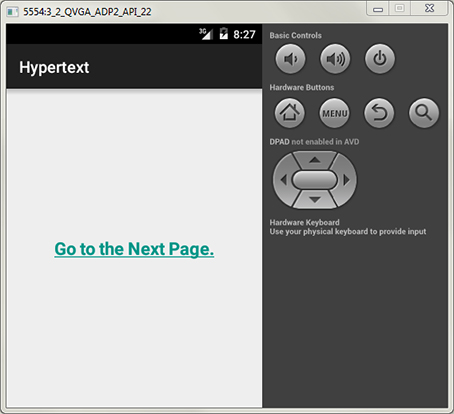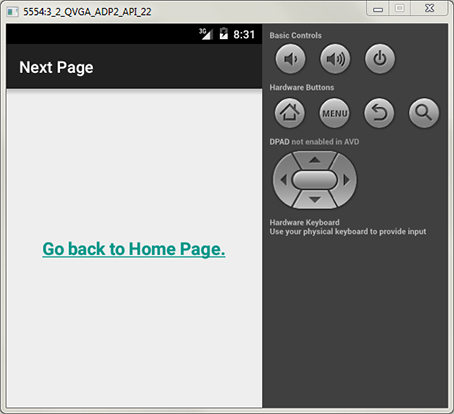
|
Next Page ⇒ ⇐ Home Page |

|
|
|
package com.example.wenchen.myapplication;
import android.support.v7.app.AppCompatActivity;
import android.os.Bundle;
import android.content.Intent;
import android.view.View;
import android.widget.TextView;
import android.text.SpannableStringBuilder;
import android.text.Spanned;
import android.text.style.URLSpan;
public class MainActivity extends AppCompatActivity {
@Override
protected void onCreate( Bundle savedInstanceState ) {
super.onCreate( savedInstanceState );
setContentView( R.layout.activity_main );
TextView tv = (TextView) findViewById( R.id.txtMsg );
MainActivity.makeTextViewHyperlink( tv );
tv.setOnClickListener( new View.OnClickListener( ) {
@Override
public void onClick( View v ) {
Intent intent = new Intent( MainActivity.this, NextActivity.class );
startActivity( intent );
}
} );
}
// Sets a hyperlink style to the textview.
public static void makeTextViewHyperlink( TextView tv ) {
SpannableStringBuilder ssb = new SpannableStringBuilder( );
ssb.append( tv.getText( ) );
ssb.setSpan( new URLSpan("#"), 0, ssb.length(),
Spanned.SPAN_EXCLUSIVE_EXCLUSIVE );
tv.setText( ssb, TextView.BufferType.SPANNABLE );
}
}
|
|
Do you not see how necessary a world of pains and troubles is to school an intelligence and make it a soul? ― John Keats, Letters of John Keats |